AMD Reveals Threadripper 2 : Up to 32 Cores, 250W, X399 Refresh
by Ian Cutress on June 5, 2018 11:05 PM EST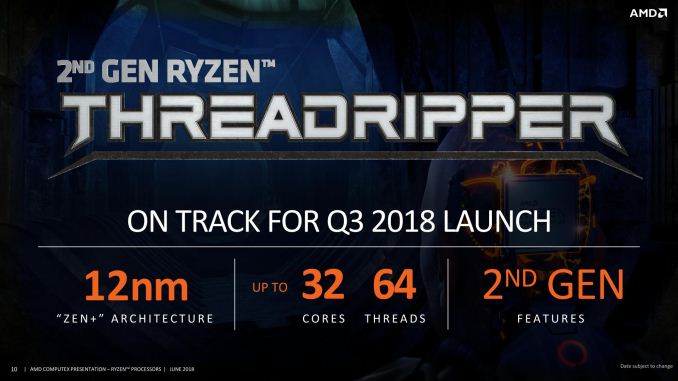
One of the surprises from AMD’s first year of the newest x86 Zen architecture was the launch of the Threadripper platform. Despite the mainstream Ryzen processors already taking a devastating stab into the high-end desktop market, AMD’s Threadripper offered more cores at a workstation-friendly price. For 2018, the next generation is going to be using AMD’s updated 12nm Zeppelin dies, as well as including a few new tweaks into the system including better boost and faster caches.
This article is still a work in progress, and will be updated as more news comes in.
AMD’s Zeppelin silicon has 8 cores, and the first generation Threadripper uses two of them to get to the top-SKU of 16-cores. Inside the CPU however, there are four pieces of silicon: two active and two inactive. For this second generation of Threadripper, called Threadripper 2 or the Threadripper 2000-series, AMD is going to make these inactive dies into active ones, and substantially increase the core count for the high-end desktop and workstation user.
At the AMD press event at Computex, it was revealed that these new processors would have up to 32 cores in total, mirroring the 32-core versions of EPYC. On EPYC, those processors have four active dies, with eight active cores on each die (four for each CCX). On EPYC however, there are eight memory channels, and AMD’s X399 platform only has support for four channels. For the first generation this meant that each of the two active die would have two memory channels attached – in the second generation Threadripper this is still the case: the two now ‘active’ parts of the chip do not have direct memory access.
This technically adds latency to the platform, however AMD is of the impression that for all but the most memory bound tasks, this should not be an issue (usually it is suggested to just go buy an EPYC for those workloads). While it does put more pressure on the internal Infinity Fabric, AMD ultimately designed Infinity Fabric for scalable scenarios like this between different silicon with different levels of cache and memory access.
Update: AMD has just published a full copy of their slide deck for the Threadripper 2 presentation. In it are a few interesting factoids.
| AMD Threadripper CPUs | |||||
| Threadripper 2 32-Core Sample |
Threadripper 2 24-Core Sample |
Threadripper 1950X |
Threadripper 1920X |
||
| Socket | TR4 (LGA) 4094-pin |
||||
| CPU Architecture | Zen+ | Zen+ | Zen | Zen | |
| Cores/Threads | 32 / 64 | 24 / 48 | 16 / 32 | 12 / 24 | |
| Base Frequency | 3.0 GHz | 3.0 GHz | 3.4 GHz | 3.5 GHz | |
| Turbo Frequency | 3.4 GHz (WIP) | 3.4 GHz (WIP) | 4.0 GHz | 4.0 GHz | |
| L3 Cache | 64 MB ? | 48 MB ? | 32 MB | 32 MB | |
| TDP | 250W | 250W | 180W | 180W | |
| PCIe 3.0 Lanes | 60 + 4 | ||||
| Chipset Support | X399 | ||||
| Memory Channels | 4 | ||||
- Both the 24-core and 32-core sample CPUs are clocked at 3.0GHz base and 3.4GHz all-core turbo, with the latter being a work-in-progress according to the company.
- The 32-core system was equipped with DDR4-3200 memory. This is notable because the Ryzen processors based on the same 12nm Zeppelin dies officially max out at DDR4-2933.
- The codename for the processor family is listed as "Colfax". This is the first we've heard this codename from AMD.
- Despite the high TDP, both CPUs used in AMD's demos were air-cooled, using AMD's Wraith Ripper Air Cooler
Also announced at the presentation is the state of play of motherboards. According to the motherboard vendors These new Threadripper 2000-series processors will have a peak TDP rating of 250W, which is much higher than 180W we saw on the 1950X. We have been told by partners that the 250W rating is actually conservative, and users should expect lower power consumption in most scenarios. Nonetheless, it was stated by several motherboard vendors that some of the current X399 motherboards on the market might struggle with power delivery to the new parts, and so we are likely to see a motherboard refresh. That is not saying that the current X399 offerings will not work, however they might not offer overclocking to the level that users might expect. At Computex there are new X399 refresh motherboards being demonstrated by a few companies, and we will report on them in due course. Other specifications are expected to match the previous generation, such as PCIe lane counts, despite the newly active dies.
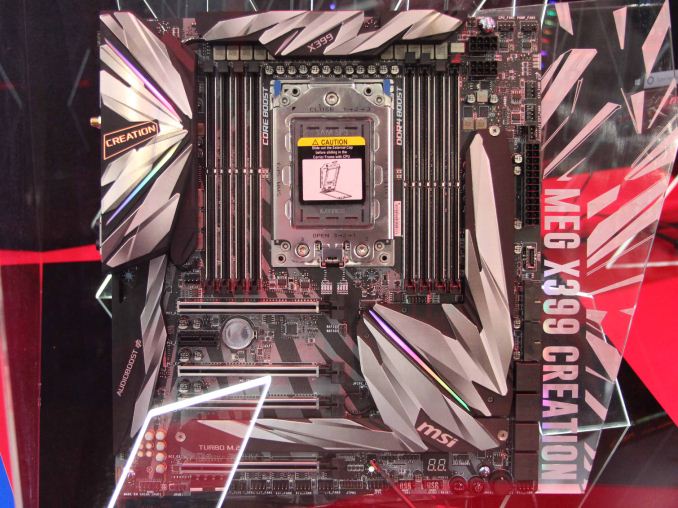
MSI's 19-phase X399 Refresh Motherboard
The launch for these new processors, according to our moles is in early August. This aligns with what AMD stated at the beginning of the year at CES, and is almost a year from the original Threadripper launch.
Pricing on the processors is set to be revealed either today or closer to the launch time. We will update this piece as more information comes in.
It will be interesting if AMD is going to go through the ‘unboxing’ embargo this time around, or just jump straight to full performance reviews. As always, come to AnandTech for the full story.
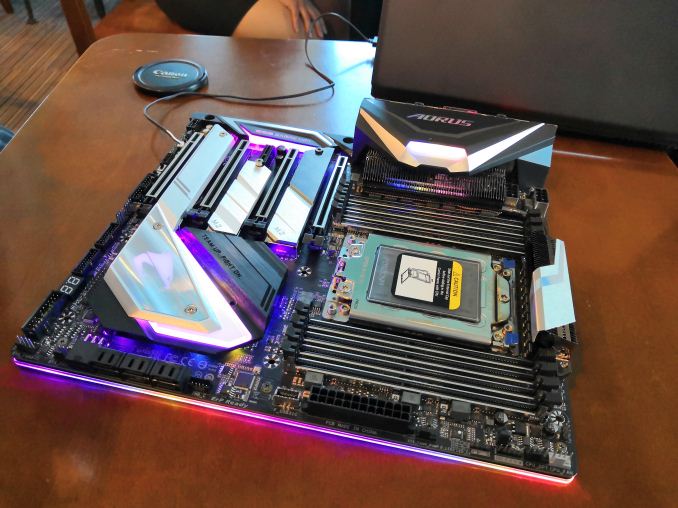
GIGABYTE's new X399 Refresh Motherboard
| Want to keep up to date with all of our Computex 2018 Coverage? | ||||||
 Laptops |
 Hardware |
 Chips |
||||
| Follow AnandTech's breaking news here! | ||||||


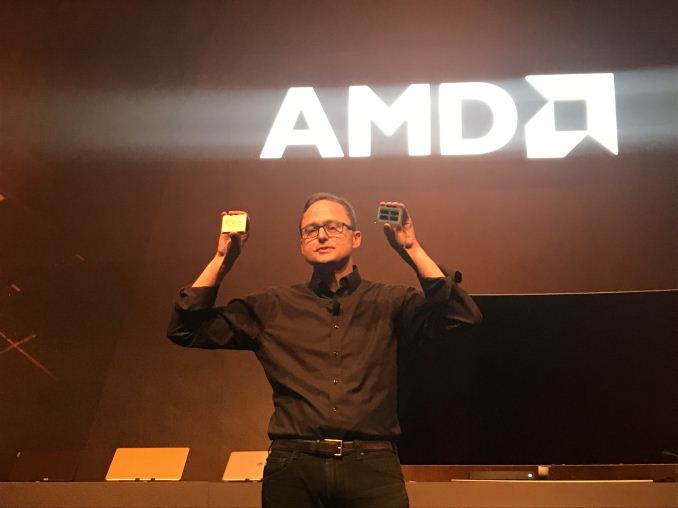
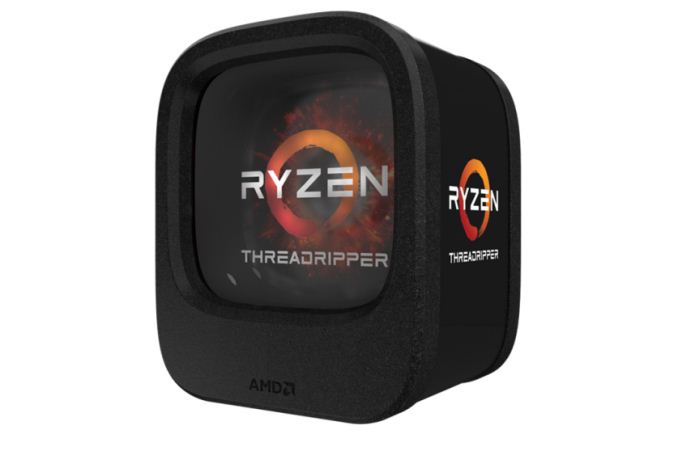
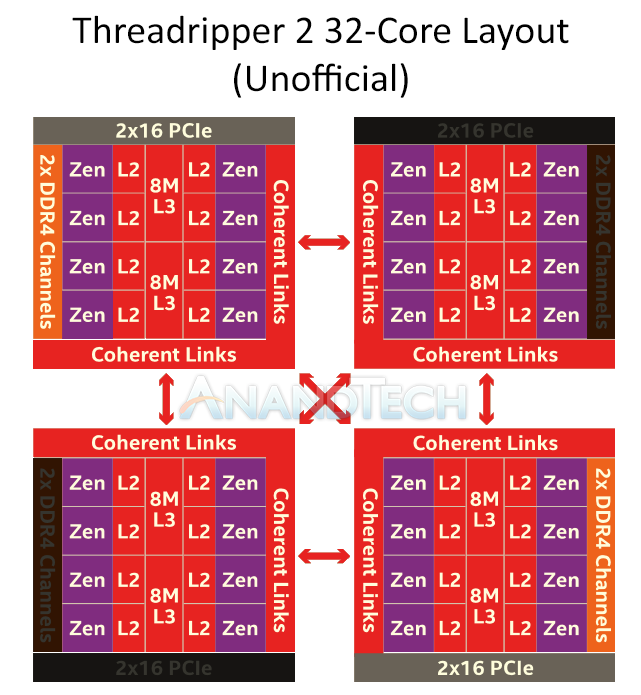
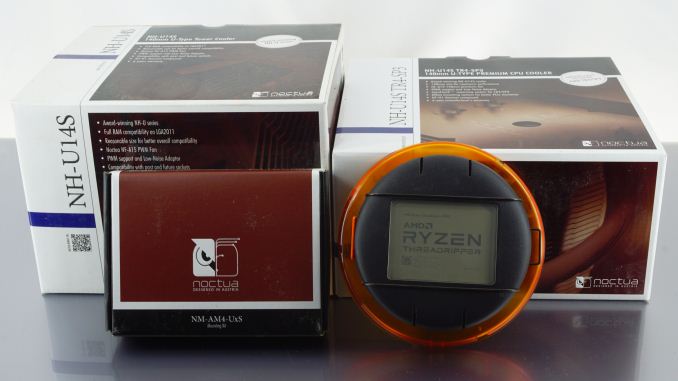














203 Comments
View All Comments
rocky12345 - Wednesday, June 6, 2018 - link
It is all cool and all to see a 32/64 core in the high end but AMD clearly was not ready to do this if they had to disable the extra dies memory channels and basically not have them getting direct access to the system memory. I guess we will have to wait and see how this all pans out and how much it hurts performance if at all.Now onto Intel and their bogus 28 core CPU demo and using phase change cooling to make it run at 5GHz but not disclosing this up front just to up shoot AMD's new Thread Ripper release. Come on Intel you are better than this or at least I would have hoped so. Now that you had your fun and got PR from it lets see the real speeds and the real performance of that CPU without the phase change cooling and using good air cooling I am going to bet it won't get any where close to 7.3k in Cinebench. Pretty sad Intel pretty sad indeed then again they got the affect they were looking for because all those that are lessor knowing about all things computers have been duped.
0ldman79 - Wednesday, June 6, 2018 - link
It's a good way to stagger their product lines.When you look at the PCIe lane madness (and other things) that Intel does, just losing 4 memory channels on the TR isn't that bad.
Intel Kaby Lake X. Nuff said.
msroadkill612 - Thursday, June 21, 2018 - link
"AMD clearly was not ready to do this if they had to disable the extra dies memory channels and basically not have them getting direct access to the system memory. I guess we will have to wait and see how this all pans out and how much it hurts performance "That is the mechanism but you conclusions are wrong imo.
Those limitations are an architectural necessity - they cant have more lanes than x399, but there are cpu intensive workloads that suit this configuration, or I doubt they would bother making it.
Its certainly an interesting new task to lob onto Fabric - act like a plx for orphan ccxS.
TassadarL - Wednesday, June 6, 2018 - link
AMD published their 32 core desktop threadripper without any 8-channel motherboard is the most issue I concern. If you try dual channel RAM under one die and another die has no RAMs on it, you could get a great performance loss on it. So X399 has been set so if 32 cores use x399 it will lose 4 channel memories and 64-lanes of PCIE 3.0.Infinity fabric cannot solve this problem. AMD REALLY need to give us a new motherboard for 8 channel like X499 or X399-8chSaturnusDK - Thursday, June 7, 2018 - link
All cores in all current Ryzen and TR CPUs access memory through the infinity fabric. Remember, the infinity fabric is the internal bus. Just like all cores on Intel CPUs access memory through their ring or mesh bus. I really don't see the huge issue. Granted the off-package infinity fabric has a slightly higher latency but decent thread management in the OS should eliminate almost all negative consequences.peevee - Wednesday, June 6, 2018 - link
What's the difference with EPIC now? Threadripper 2 = EPIC 2 (non-existing yet?)silverblue - Wednesday, June 6, 2018 - link
Apparently, the next generation EPYC will use Zen 2 and not Zen+. As such, EPYC will not be refreshed until 2019.phoenix_rizzen - Wednesday, June 6, 2018 - link
Threadripper 1 has 64 PCIe lanes, 4 memory controllers, up to 16 cores per CPU, and 1 CPU per motherboard, using Zen cores.EPYC 1 has 128 PCIe lanes, 8 memory controllers, up to 32 cores per CPU, and up to 2 CPU sockets per motherboard, using Zen cores.
Threadripper 2 has 64 PCIe lanes, 4 memory controllers, up to 32 cores per CPU, and 1 CPU per motherboard, using Zen+ cores.
EPYC 2 should have 128 PCIe lanes, 8 memory controllers, up to 32 cores per CPU (although there are rumours this may double), and up to 2 CPUs per motherboard, using Zen2 cores.
Pretty decent evolution of features there.
Pork@III - Thursday, June 7, 2018 - link
EPYC 2 up to 48(or maybe 64?) cores per CPU don't forget ZEN2 architecture on 7nm.peevee - Wednesday, June 6, 2018 - link
BTW, 32 cores with SMT bumps right against the Windows 64 "logical CPU per group" limitation (I wonder what m0r0n @MS invented this sht to begin with), and taking advantage of all cores in multi-group configurations requires rewrite of multi-threaded code in existing apps.